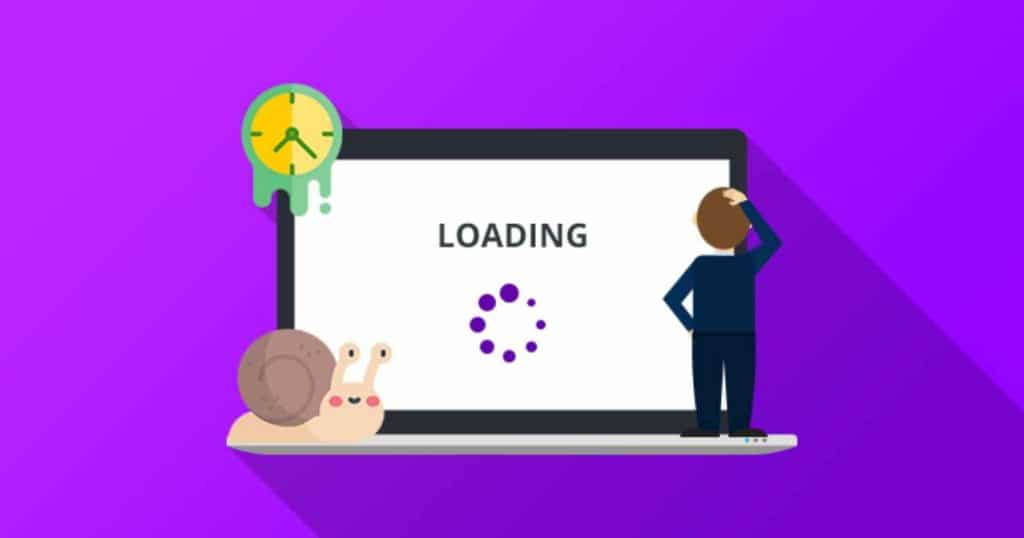How well a website works is important for keeping users happy and interested. If a website takes forever to load, it doesn’t just annoy people who visit it, it also affects how many people end up buying things or how easily the website shows up on search engines. To make sure that people have a smooth and enjoyable time using your website, it’s super important to make the website work well. In this article, we’ll talk about simple ways to make websites work better, focusing on web development.
We’ll cover things like making pages load faster, not asking the website to do too much at once, fixing pictures so they are not too big, and using some smart techniques to store things that make the website faster. We discussed this topic with Reactive Graphics, a web design and web development London based agency. Reducing page load times is a crucial aspect of web development. Page load times have a direct correlation with user experience and website success.
Reducing page load times
Page load times have a direct correlation with user experience and website success. Research indicates that users expect websites to load within a matter of seconds, and even a delay of a few seconds can result in higher bounce rates. To address this, several techniques can be employed.
Minimise HTTP requests
One of the most impactful ways to speed up a website during web development is to minimise the number of HTTP requests. This involves reducing the number of elements on a page, such as images, scripts, and stylesheets. Each element requires an individual request and by reducing these requests, you can significantly enhance load times.
Combine and minify files
When you put lots of CSS or JavaScript files together into one file, you ask for fewer things from the server. Additionally, minification involves removing unnecessary whitespace and comments from code, further reducing file sizes.
Optimising images and resources
Images and other resources contribute heavily to page load times. Optimising these elements is crucial to maintaining a balance between visual appeal and performance:
Image compression
Images often account for a substantial portion of a web page’s size. Utilise image compression tools to reduce their file size without sacrificing quality. Formats like WebP offers efficient compression without compromising image clarity.
Lazy loading
Implement lazy loading for images and other media. This trick puts offloading things that aren’t super important until you can actually see them on the screen. This makes the page load faster when you first open it.
Caching strategies
Caching strategies are a fundamental part of web development and performance optimisation. Caching means keeping certain unchanging things saved so you don’t have to get them from the server each time you look at a page. Effective caching strategies can significantly enhance performance.
Browser caching
Make the most of browser caching by setting the right instructions for storing stuff in the browser. This helps the user’s browser save things on their computer, so the next time they visit, things load faster.
Content Delivery Networks (CDNs)
CDNs distribute website content across a network of servers located in various geographic regions. By serving content from a server closer to the user, CDNs cut down on delay and improve load times.
Code optimisation
Efficient code plays a crucial role in website performance. Code that is too big or poorly optimised can take longer to do its job and make things show up more slowly.
Minimise JavaScript execution
JavaScript can use up a lot of resources and make things load slowly. To fix this, try to use fewer scripts that need to wait for each other and instead choose a way that lets them load without stopping the page from showing up.
CSS performance
Don’t use too many complicated CSS rules. Try to have fewer styles that you really need, and don’t use selectors that are overly detailed, as those can make things load slower.
Responsive design
As mobile usage continues to rise, ensuring optimal performance on mobile devices is necessary.
Responsive design
Adopt a responsive design approach to create websites that adapt seamlessly to different screen sizes. This improves user experience and performance across various devices.
Regular monitoring and testing
Regular monitoring and testing are important in web development after implementing performance optimisation techniques. Regularly assess performance using tools like Google PageSpeed Insights, GTmetrix and WebPageTest. These tools provide insights into load times and offer suggestions for further improvement.
To sum up, making websites work better is a complex effort in web development to give users a smooth experience and reach business targets. By strategically reducing page load times, minimising HTTP requests, optimising images and implementing caching strategies, web developers can create websites that load quickly, engage users, and positively impact conversion rates. As the way websites are made keeps changing, it is important to always work on improving how well they work. This makes sure websites stay strong and easy to use in a digital world where speed and efficiency are really important Xcv panel.

